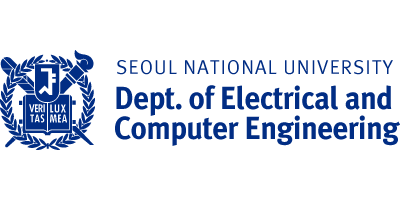[Press Release] Professor Jeonghun Kwak’s Research Team (Seoul National University, College of Engineering, Department of Electrical and Computer Engineering) Identifies the Switching Mechanisms in Next-generation Memristive QDs

(From the left) Professor Jeonghun Kwak, Dr. Geunwoo Baek & Ph.D. candidate Yeounjun Kim of SNU Electrical and Computer Engineering (ECE) Department
The College of Engineering (Dean Yoosuk Hong) at Seoul National University (SNU) announced on May 1st that a research team led by Professor Jeonghun Kwak, including co-first authors Dr. Geunwoo Baek and Ph.D. candidate Yeonjun Kim, has presented a resistance change mechanism for memristor* devices using core-shell structured colloidal quantum dots (QDs). The research was performed in collaboration with Professor Sooyeon Lee and Professor Sunkyu Yu from Seoul National University, and Professor Wanki Bae and Professor Jaehoon Lim from Sungkyunkwan University.
Colloidal quantum dots with a core-shell structure easily allow the adjustment of electrical and optical properties depending on their size, shape, and composition, and they possess excellent luminescent properties, making them suitable for QD display manufacturing. However, due to their small size of just a few nanometers, even minor surface defects significantly affect their electrical and optical properties. The research team confirmed that controlling these surface defects on the quantum dots can modulate resistance, which they utilized in the fabrication of memristor devices.
The quantum dot memristor developed by the research team demonstrated high reliability with low power operation and the capability for repetitive storage and read operations. Yet the operation mechanism of memory devices using core-shell structured quantum dots was previously unknown. To uncover the mechanism behind the change in resistance, the team introduced new methods in their device and materials research.
Initially, to identify the primary charge carrier causing resistance changes within the core-shell structured quantum dots, the team inserted a layer of poly(methyl methacrylate), which is an organic insulator, either above or below the quantum dots and observed the switching characteristics. Through this approach, they determined for the first time that the primary charge carrier altering the resistance in quantum dot memristor devices is the 'electron'.
Next, to determine the positions and energy levels of the defects where electrons are trapped, which are the cause of resistance changes, the research team created QD memristors using individual core-only and shell-only structured quantum dots. They measured the electrical and optical properties of these devices using various methods and compared them with actual devices. As a result, the team was the first to establish that the switching characteristics of quantum dot memristors are dictated by the trap energy levels existing on the outermost surface of the quantum dots.
(Left) Comparison of QD memristors to synapse structure, (Right) Results of pattern training and inference
The quantum dot memristor developed by the research team demonstrated excellent linear response characteristics required for complex processing and memory formation in synapses. Utilizing this, a simulated neural network trained on the EMNIST (Extended Modified National Institute of Standards and Technology) dataset achieved a high recognition rate of 91.46% when identifying the letters S, N, and U.
Dr. Geunwoo Baek stated, "We demonstrated that high-performance memristors can be developed using core-shell structured quantum dots," and added, "By uncovering the switching mechanism, the development of quantum dot memristors is expected to become more active in the future."
Professor Jeonghun Kwak noted, "It's significant that the field of research on colloidal quantum dots has expanded not only to displays but also to next-generation semiconductors like artificial neural networks. Quantum memristic memory, which can also be optically controlled, is expected to become a key technology for future photo-electric hybrid computing."
Meanwhile, the results of this research were published online on May 1st in 'Nano Letters,' one of the most prestigious journals in the fields of materials, nanotechnology, and nanoscience. This research was conducted with the support of the Fundamental Research Lab program of the National Research Foundation of Korea.
(From the left) Professor Jeonghun Kwak, Dr. Geunwoo Baek & Ph.D. candidate Yeounjun Kim of SNU Electrical and Computer Engineering (ECE) Department
Link to paper: https://pubs.acs.org/doi/full/10.1021/acs.nanolett.4c01083
Source: https://ece.snu.ac.kr/ece/news?md=v&bbsidx=55546
Translated by: Jiyong Yoo, English Editor of the Department of Electrical and Computer Engineering, cyoo7@snu.ac.kr


